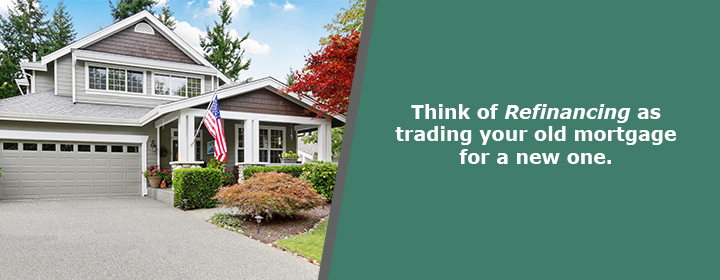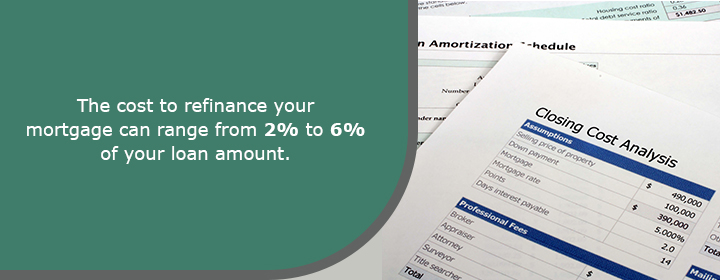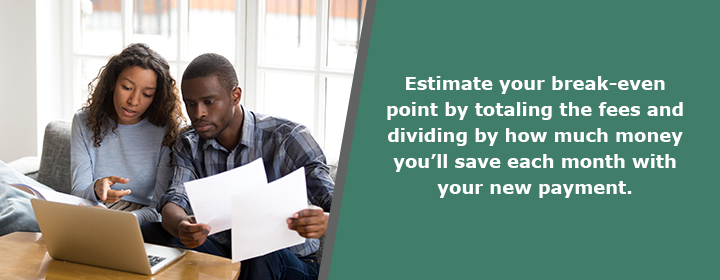Have mortgage rates dropped since you bought your house? Has the price of your home increased? If so, you might be able to save a ton of money simply by refinancing your mortgage.
In the simplest terms, refinancing means trading in your old mortgage for a new one. There are lots of reasons to refinance — maybe you want to lower your monthly payment, shorten the length of your mortgage (which means how quickly you’ll pay off your home), or convert from one type of mortgage to another — with many different types of mortgage options.

Should I Refinance My Mortgage?
Let’s take a closer look at each reason you may want to refinance, to see if refinancing might be right for you!
1. Interest Rates Have Fallen
As we’ve all seen this year, things can change in an instance. Some of the best news to come out of 2020 is that interest rates are more competitive than ever. That means it’s potentially cheaper for you to borrow money. Even if you bought your home in the last few years, a lower interest rate can have a profound effect on monthly payments, potentially saving you hundreds of dollars a year.
It’s not just the market that influences interest rates — if you’ve seen your salary or credit score rise since you got your original home mortgage, you could be eligible for a lower interest rate. It’s worth having an experienced mortgage lender crunch the numbers for you.
2. Your Home’s Worth More Now
According to Zillow, the nation’s leading data-driven real estate site, home values in both Maryland and West Virginia have continued to rise during these turbulent times — with homes in both states experiencing sharp increases (WV: 6.2%, MD: 12.01%) during 2021.
Unless you put down at least a 20% down payment when originally purchasing your home, you probably had to purchase private mortgage insurance (PMI), which boosted your monthly payment. So, you may want to take a look at both how much your home is worth as well as how much of your mortgage you’ve paid down because that combination could pay big dividends for you.
See, if you’ve lived in your home for a while, you’ve probably paid down a good portion of your original mortgage balance — which means you may have enough equity in your home to eliminate PMI and reduce your monthly payment.

3. A Different Type of Mortgage Works Better
The two most common types of home loans are adjustable-rate mortgages, or ARMs, and fixed-rate mortgages. Here’s the difference, according to Investopedia:
- A fixed-rate mortgage charges a set rate of interest that does not change throughout the life of the loan.
- The initial interest rate on an adjustable-rate mortgage may be set below the market rate on a comparable fixed-rate loan, and then the rate rises (or possibly lowers) as time goes on.
Both have their advantages and disadvantages, but refinancing could help you lower your interest rate, move from an ARM to a fixed-rate loan — or both! You can even use our free loan calculator to estimate any potential savings based on your personal situation.
Embarking on the Refinancing Journey: What You Need to Know
If refinancing may be an option for you, you’ll want to be prepared for the refinance process. As we told you earlier, you’re basically replacing your original mortgage with a new one. That means you’ll need to provide the same types of documentation to show you can afford your new loan.
And, refinancing isn’t free — the cost to refinance your mortgage can range from 2% to 6% of your loan amount. So, before you make a decision, think about how long it will take you to start saving money after paying to refinance.
You can estimate your break-even point by totaling up these fees (which include everything from application and credit report fees to the cost of appraisals and inspections) and dividing by how much money you’ll save each month with your new payment.

That being said, refinancing your home loan is relatively simple, especially when you have a good mortgage lender on your side. Here’s how it works:
- Determine your end-game. Are you trying to lower your monthly payment? Pay off your mortgage faster? Switch to a different type of loan? You’ll want to make this clear to your lender in order for them to help you find the right option.
- Get ready. Before you submit any mortgage applications, you’ll want to make sure you have your finances in order. That means using a loan calculator to get an idea of how your principal, interest, terms, and payments might change through refinancing, reviewing your credit report, and determining how much equity you have in your home.
- Apply for your mortgage. When a mortgage professional reviews your application, they’ll do a hard pull on your credit in order to evaluate your worthiness. The lower your credit score, the less access you may have to the best rates. Should you decide to submit applications to different lenders, complete all your applications within a week or so — it can greatly reduce any impact on your credit score.
- “Lock” your interest rate. Once you’ve made a decision to refinance, lock in your interest rate so that you minimize any chance of the rate increasing before it’s time to close on your loan.
- Close on your loan! This step will feel much like when you closed on your first mortgage — you’ll sign a lot of paperwork and pay any costs related to your refinance. The good news is that you’ll have a new loan with the rate and terms you want, and you won’t have to worry about packing and moving since you’re already living in your home!

Taking the Leap: Your Next Steps in Mortgage Refinancing
JSB offers a wide variety of refinancing options as well as the personalized service you seek from your financial partner. And, unlike many internet-based lenders, all of our home loans are locally approved, financed, and serviced right here in Maryland and West Virginia.
If you’re ready to refinance or would like to talk with a mortgage lender about refinancing your current mortgage, contact an experienced mortgage professional or visit one of our convenient locations today. We’re ready to help you meet — and exceed — your financial goals.

